Mints and gum are both enduring staples of the UK confectionery market and are firm fixtures at the traditional c-storet ill point.
However, both categories are currently facing decline as the market for sweets gets ever more competitive. And while in recent years a host of new products have at least given gum-loving consumers something to chew on, experts say that the future for mints is really starting to suck.
Mintel reports that sales of gum have grown a very modest 2% since 2007, while mint sales have declined by as much as 8% in the past five years. And there's evidence that people who once favoured mints to freshen their breath are now turning to gum.
Mintel senior consumer analyst Michelle Strutton says: "Traditional segments such as boiled and mild mints have largely been overtaken by innovations elsewhere. Changes in tastes are seeing many younger adults migrate to chewing gum."
But despite consumers' evolving tastes, mints and gum are products that traditionally work well within c-stores, thanks to their impulse-driven appeal. According to AC Nielsen, Wrigley's Extra is worth £89m within the impulse channel, while Fox's says that sales of its Glacier Mints and XXX Mints are still on the rise in the c-store sector.
So, what has given gum its current edge over mints? One important factor could be the way in which gum has managed to position itself as a functional product with added benefits, rather than just a teen treat.
"Gum has functional purposes; it's seen by consumers as a concentration aid, an appetite suppressant, a cigarette replacement and a relief from boredom," says Mark Stangroom, marketing director at Perfetti Van Melle, the company behind Mentos and Smint. But he adds: "First and foremost, eating gum is about freshening the breath, whether this be after a heavy night out, after lunch or before meeting new people."
Manufacturers have been using this natural affinity between gum and dental health as a platform to launch new oral hygiene products. These include Miradent Xylitol, which manufacturers Hager and Werken claim can inhibit plaque and dental cavities by 80%; and Biotene Dry Mouth Gum, which promotes its power to relieve oral dryness.
The market for fruit-flavoured gum, which was kick-started by Trident in 2007, also offers scope to grow the chewing gum market.
Says Cadbury trade communications manager Kate Harding: "The launch of Trident drove innovation in the category, exciting consumers about the gum market which had previously been dominated by mint flavours.
"Trident offers consumers the choice to select a gum product for taste and flavour as well as for functionality."
Harding says that since its 2007 launch the brand has consistently performed well and achieved about an 8% share through 2009, "a good achievement considering the majority of npd declines in the years after launch," she adds.
Analysts claim that the ongoing search for functionality and innovation may be a necessary step to secure the future of the gum market. Health awareness, twinned with tough government regulation on the advertising of foods high in fat, salt and sugar, means that children appear to be cutting down their consumption of sweets and gum. Meanwhile, the UK's population of under-24s, a group normally perceived as key gum consumers, is shrinking.
One of the ways the wider confectionery sector has reacted to this challenge is by dropping attempts at 'kiddie-appeal' and going for an altogether more adult market. The chocolate category, in particular, has started to stress more premium ingredients, sophisticated packaging and high-end flavours.
With the launch of 5, Wrigley looks like it's taking the gum category in the same direction. Wrigley spokesman Gareth Streeter describes 5 as having "stylish embossed black gloss packaging with an eye-catching burst of colour". The gum straddles fruit and mint flavours with its peppermint, spearmint and tropical variants.
Because of gum's low-sugar and no-sugar heritage, driven by Wrigley and Trident, chewing gum has further opportunities to chime with consumers' current health concerns.
"Wrigley was the first to introduce a sugar-free gum into the marketplace," says Streeter. "These products now make up more than 94% of our chewing gum sales."
Elsewhere an ageing population could be regarded as a boon for the mint market, since consumption of mints usually peaks with the over-64s. But, despite sugar-free variants spurring growth in the early noughties, Mintel estimates that the sales volume of the sector is set to fall 11% in the next five years. Sales of traditional OAP favourite, the boiled mint, have been hit hardest with sales falling 35%, but mild mints are also feeling the crunch, with a 17% decline.
Mints might be facing testing times, but beleaguered manufacturers are gathering strength from the news that amidst all the gloom, stronger-flavoured varieties are showing growth. Buoyed by interest in oral freshness, the market for strong mints has actually grown by 16% in the past two years, according to Mintel.
The relaunch of XXX Mints this year, aka 'the stronger extra strong mint', with some new packaging and a concerted PR push, has helped volume sales of the brand rise by 4%.
"The growth in demand for intense, extra-strong flavours makes XXX Mints the perfect alternative to menthol gum products," says Fox's marketing manager Jon Ebrill.
Tellingly, the biggest news in the mint category this year has been Trebor's recent move into the chewing gum market with Trebor Extra Strong Gum. Trebor is the best-selling brand in the UK mints category with nearly 50% market share, and the move sees the brand attempt to branch out into gum. The rest of Trebor's mint portfolio, which includes Extra Strong Mints and Softmints, has also received a packaging makeover.
Harding says: "Cadbury identified the opportunity to grow the gum category by appealing to the 35-plus consumer, and Trebor Extra Strong offers the perfect brand to do this. We are confident that the move will invigorate the category."
The £3.5m marketing spend that is accompanying the launch includes opportunities for retailers to receive mixed display and counter units that hold both gum and mints, offering store owners the chance to promote across both categories.
The TV ads now on our screens for Trebor's new gum feature a young staff member showing older management at the company how it's done, and coming up with a fresh new product on the spot.
As well as npd, one other way forward for the mint sector is to re-acquaint 30-plus consumers with flavours from their youth. In a tough climate the relaunch of retro brands can offer a convenient comfort buy for middle-aged purchasers feeling the pressure. With several heritage brands on its books, the mint sector is in the perfect position to cash in.
"The overwhelming breadth of choice in mints and gums can often be a reason for consumers to return to tried-and-tested brands," says Fox's Ebrill. "We believe this trust will play a role in improving sales of established mint brands."
When it comes to making the most of your mints and gums offer, putting thought into merchandising can pay dividends. Wrigley's Streeter says: "Good merchandising can reap rewards by boosting sales, increasing footfall and ultimately increasing profit opportunities."
Cadbury's Harding adds: "Most mint and gum products are consumed on the go, so it's important to offer a good range. Both mints and gum have a fast rate of sale, so products should be sited in key impulse areas and flagged by top-selling brands. Research shows that only one in five shoppers notice gum in-store, but when they do, 96% of them make a purchase."
Ebrill adds: "Secondary siting, using clip strips and gondola ends, works well to catch the consumer's eye, especially where items are being price promoted."
However, both categories are currently facing decline as the market for sweets gets ever more competitive. And while in recent years a host of new products have at least given gum-loving consumers something to chew on, experts say that the future for mints is really starting to suck.
Mintel reports that sales of gum have grown a very modest 2% since 2007, while mint sales have declined by as much as 8% in the past five years. And there's evidence that people who once favoured mints to freshen their breath are now turning to gum.
Mintel senior consumer analyst Michelle Strutton says: "Traditional segments such as boiled and mild mints have largely been overtaken by innovations elsewhere. Changes in tastes are seeing many younger adults migrate to chewing gum."
But despite consumers' evolving tastes, mints and gum are products that traditionally work well within c-stores, thanks to their impulse-driven appeal. According to AC Nielsen, Wrigley's Extra is worth £89m within the impulse channel, while Fox's says that sales of its Glacier Mints and XXX Mints are still on the rise in the c-store sector.
So, what has given gum its current edge over mints? One important factor could be the way in which gum has managed to position itself as a functional product with added benefits, rather than just a teen treat.
"Gum has functional purposes; it's seen by consumers as a concentration aid, an appetite suppressant, a cigarette replacement and a relief from boredom," says Mark Stangroom, marketing director at Perfetti Van Melle, the company behind Mentos and Smint. But he adds: "First and foremost, eating gum is about freshening the breath, whether this be after a heavy night out, after lunch or before meeting new people."
Manufacturers have been using this natural affinity between gum and dental health as a platform to launch new oral hygiene products. These include Miradent Xylitol, which manufacturers Hager and Werken claim can inhibit plaque and dental cavities by 80%; and Biotene Dry Mouth Gum, which promotes its power to relieve oral dryness.
The market for fruit-flavoured gum, which was kick-started by Trident in 2007, also offers scope to grow the chewing gum market.
Says Cadbury trade communications manager Kate Harding: "The launch of Trident drove innovation in the category, exciting consumers about the gum market which had previously been dominated by mint flavours.
"Trident offers consumers the choice to select a gum product for taste and flavour as well as for functionality."
Harding says that since its 2007 launch the brand has consistently performed well and achieved about an 8% share through 2009, "a good achievement considering the majority of npd declines in the years after launch," she adds.
Analysts claim that the ongoing search for functionality and innovation may be a necessary step to secure the future of the gum market. Health awareness, twinned with tough government regulation on the advertising of foods high in fat, salt and sugar, means that children appear to be cutting down their consumption of sweets and gum. Meanwhile, the UK's population of under-24s, a group normally perceived as key gum consumers, is shrinking.
One of the ways the wider confectionery sector has reacted to this challenge is by dropping attempts at 'kiddie-appeal' and going for an altogether more adult market. The chocolate category, in particular, has started to stress more premium ingredients, sophisticated packaging and high-end flavours.
With the launch of 5, Wrigley looks like it's taking the gum category in the same direction. Wrigley spokesman Gareth Streeter describes 5 as having "stylish embossed black gloss packaging with an eye-catching burst of colour". The gum straddles fruit and mint flavours with its peppermint, spearmint and tropical variants.
Because of gum's low-sugar and no-sugar heritage, driven by Wrigley and Trident, chewing gum has further opportunities to chime with consumers' current health concerns.
"Wrigley was the first to introduce a sugar-free gum into the marketplace," says Streeter. "These products now make up more than 94% of our chewing gum sales."
Elsewhere an ageing population could be regarded as a boon for the mint market, since consumption of mints usually peaks with the over-64s. But, despite sugar-free variants spurring growth in the early noughties, Mintel estimates that the sales volume of the sector is set to fall 11% in the next five years. Sales of traditional OAP favourite, the boiled mint, have been hit hardest with sales falling 35%, but mild mints are also feeling the crunch, with a 17% decline.
Mints might be facing testing times, but beleaguered manufacturers are gathering strength from the news that amidst all the gloom, stronger-flavoured varieties are showing growth. Buoyed by interest in oral freshness, the market for strong mints has actually grown by 16% in the past two years, according to Mintel.
The relaunch of XXX Mints this year, aka 'the stronger extra strong mint', with some new packaging and a concerted PR push, has helped volume sales of the brand rise by 4%.
"The growth in demand for intense, extra-strong flavours makes XXX Mints the perfect alternative to menthol gum products," says Fox's marketing manager Jon Ebrill.
Tellingly, the biggest news in the mint category this year has been Trebor's recent move into the chewing gum market with Trebor Extra Strong Gum. Trebor is the best-selling brand in the UK mints category with nearly 50% market share, and the move sees the brand attempt to branch out into gum. The rest of Trebor's mint portfolio, which includes Extra Strong Mints and Softmints, has also received a packaging makeover.
Harding says: "Cadbury identified the opportunity to grow the gum category by appealing to the 35-plus consumer, and Trebor Extra Strong offers the perfect brand to do this. We are confident that the move will invigorate the category."
The £3.5m marketing spend that is accompanying the launch includes opportunities for retailers to receive mixed display and counter units that hold both gum and mints, offering store owners the chance to promote across both categories.
The TV ads now on our screens for Trebor's new gum feature a young staff member showing older management at the company how it's done, and coming up with a fresh new product on the spot.
As well as npd, one other way forward for the mint sector is to re-acquaint 30-plus consumers with flavours from their youth. In a tough climate the relaunch of retro brands can offer a convenient comfort buy for middle-aged purchasers feeling the pressure. With several heritage brands on its books, the mint sector is in the perfect position to cash in.
"The overwhelming breadth of choice in mints and gums can often be a reason for consumers to return to tried-and-tested brands," says Fox's Ebrill. "We believe this trust will play a role in improving sales of established mint brands."
When it comes to making the most of your mints and gums offer, putting thought into merchandising can pay dividends. Wrigley's Streeter says: "Good merchandising can reap rewards by boosting sales, increasing footfall and ultimately increasing profit opportunities."
Cadbury's Harding adds: "Most mint and gum products are consumed on the go, so it's important to offer a good range. Both mints and gum have a fast rate of sale, so products should be sited in key impulse areas and flagged by top-selling brands. Research shows that only one in five shoppers notice gum in-store, but when they do, 96% of them make a purchase."
Ebrill adds: "Secondary siting, using clip strips and gondola ends, works well to catch the consumer's eye, especially where items are being price promoted."
















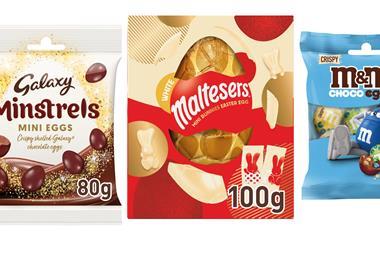
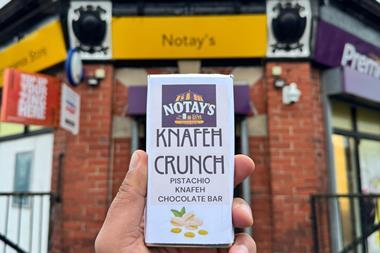



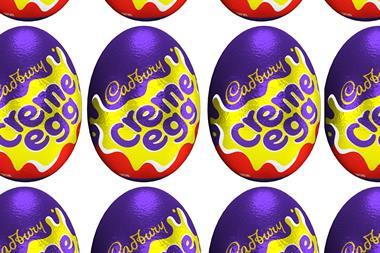

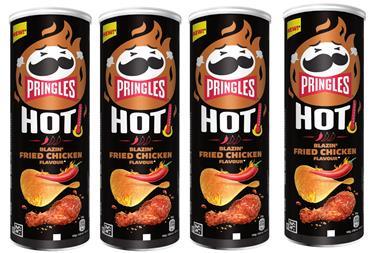



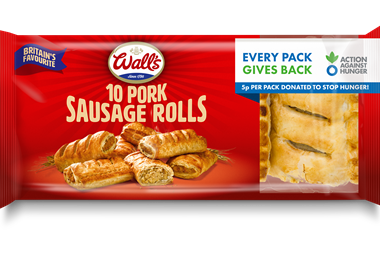
No comments yet